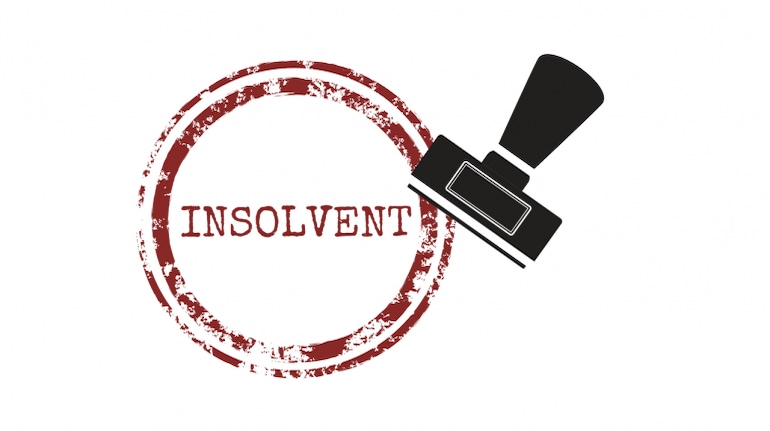

Hemant Kothari
Finance Minister Nirmala Sitharaman on Sunday announced several measures to provide relief to companies that face the threat of insolvency as a result of defaults owing to the COVID-19 pandemic. In line with earlier announcements, the FM said the government will bring in an ordinance to suspend the initiation of fresh insolvency cases for a year. Further, the definition of ‘default’ that forms the basis of initiation of the proceedings under the Insolvency and Bankruptcy Code 2016 (IBC) will be amended to exclude COVID-19 related debt.
As for MSMEs (Micro, Small and Medium Enterprises), a special insolvency resolution framework will be notified soon. These measures are in addition to the increase in the threshold for default to trigger insolvency to Rs 1 crore from Rs 1 lakh, which was notified on March 24.
I had earlier argued here that instead of suspending IBC, it can be used as an efficient and time-bound tool to allow creditors and debtors to quickly address the problem of distress and immediately resume economic activities. However, for better or worse, given the FM’s announcement to suspend the IBC, it is now important to understand the effects of such a suspension.
No protection from other recovery laws
Apart from the recourse to start insolvency against a company, if a lender holds mortgage over immovable properties of a debtor -- which it does hold in most cases -- it can initiate a sale process of such properties with minimal court intervention and also take over the management of the debtor under the Securitisation and Reconstruction of Financial Assets and Enforcement of Security Interest Act, 2002 (SARFAESI Act). There is no indication that the government will suspend the operation of the SARFAESI Act, along with the IBC.
Also, it appears that the suspension of the IBC is limited vis-à-vis companies. Only Section 7 (application by financial creditor), Section 9 (operational creditor) and Section 10 (the company itself) shall be suspended for a year. However, no suspension of the insolvency process against personal guarantors to a company has been announced. Accordingly, if directors or promoters of a company have provided personal guarantees to its lenders, they may still be taken to the insolvency court under Part III of the IBC.
It’s anybody’s guess that if other recovery laws would continue to operate against a defaulting debtor and its related parties, the suspension of IBC would not even achieve the objective of its suspension, but it will surely deprive both creditors and debtors of the benefits. One such significant benefit of IBC is the moratorium on all coercive and recovery actions against a company that is being purportedly sought to be achieved by its suspension.
Debtor’s fundamental freedom to exit hits a wall
M S Sahoo, Chairman, Insolvency and Bankruptcy Board of India (IBBI), conceptualises the IBC as a tool for debtors to exit their investments in an orderly manner. Such market-driven freedom to exit, he argued, ensures release of resources from inefficient uses and in turn, unlocks growth.
Among developed jurisdictions that have announced changes to their insolvency laws in response to COVID-19, none have suspended the ability of debtor companies to submit themselves to the insolvency process while they may have restricted creditors’ ability to initiate insolvency.
However, the suspension of Section 10 of the IBC, which allows a debtor company to submit itself to the insolvency process, denies the very freedom to exit, which is fundamental for efficient markets. This is especially so when the debtor in its own assessment may believe that it lacks the ability to carry on its operations without orderly and timely resolution of distress.
The paradox of COVID-19 debt
The proposed amendment to exclude COVID-19 related defaults for initiation of insolvency processes seems redundant in the wake of the entire suspension for a year. It is not yet clear if the government intends to continue the benefit of exclusion of defaults owing to the pandemic even after the suspension. If it were so, the suspension of the IBC in effect can operate beyond a year.
Other jurisdictions have also chosen to base their restrictions on creditor actions for recovery by providing certain criteria to assess if the default is a result of COVID-19 pandemic or not. However, such jurisdictions have not suspended their respective insolvency laws in entirety. For instance, recent amendments to the insolvency laws in Germany stipulate that a company would not be eligible for suspension (a) if insolvency is not due to the COVID-19 crisis and (b) there is no prospect of overcoming an existing cash flow insolvency. A rebuttable presumption is established for suspension of insolvency proceedings vis-à-vis a company if it was not cash flow insolvent on December 31, 2019. Further, for any creditor’s insolvency application to be successful, it would have to show that the insolvency of the debtor took place before March 1, 2020.
For India, it remains to be seen if the exclusion of COVID-19 related default will also be on similar lines and the exclusion benefits would be available even after the initial suspension of one year.
One for MSMEs
The fine print of the specific insolvency resolution framework for MSMEs has not been provided yet. It may only be hoped that the said framework would introduce pre-pack restructuring or resolution mechanism for MSMEs. Under the pre-pack mechanism, the lender and the debtor agree on restructuring or new investment by a third-party prior to commencement of the insolvency process against the debtor. The pre-agreed restructuring or resolution plan is then implemented under the supervision of the insolvency court and in terms of the statutory guidance.
The pre-pack mechanism has its own challenges and particularly so, in the Indian context owing to its ‘debtor-in-control’ model whereby the management remains in charge of the debtor as opposed to a resolution professional and the Committee of Creditors under the IBC. However, at least for MSMEs, particularly in the wake of the pandemic, the pre-pack mechanism may be a middle path that addresses concerns of both debtors and creditors by providing a formal tool to restructure the debt, backed by statutory protections for both.
Hemant Kothari is Senior Associate, Chir Amrit Legal LLP, Jaipur, and Visiting Faculty, National Law University, Delhi. Views are personal.
Discover the latest business news, Sensex, and Nifty updates. Obtain Personal Finance insights, tax queries, and expert opinions on Moneycontrol or download the Moneycontrol App to stay updated!